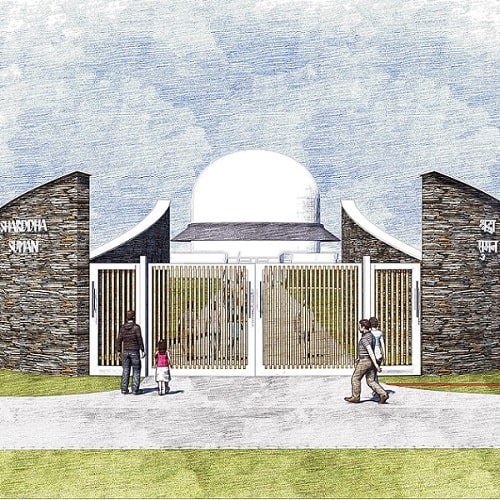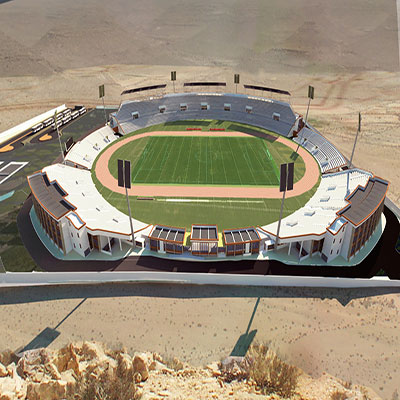
HOUSING FOR HIM-RESORTS, RANIKHET (NOW NANDA DEVI VILLAGE), ALMORA, UTTARAKHAND
Completed in 1996
Dense cluster of 20 environmentally sensitive holiday homes made using local slate, rubble and timber on a beautiful and challenging site in the Himalayas.
The site slopes northwards with a great view of the Kumaon Himalayas, notably a panoramic view of the Trishul. The houses are oriented so as to preserve this view in at least one major room in each property. One of the major challenges was to allow the south sun to enter and provide some solar heating, difficult on a north facing slope, and made more difficult due to an error in the initial site survey which had marked the contours as 80% of actual. Nevertheless, the difficulties were overcome and the houses are generally successful in utilizing solar heat gain, along with rock wool roof insulation, thick walls and appropriate glazing to reduce the amount of fireplace heating required to keep the occupants comfortable in the often cold climate.
The characteristic "dry rubble" look of the walls was achieved by laying local rubble stone in cement mortar but in a way that left exposed hungry joints. These were created by masons who needed to be re-trained to appreciate their traditional village houses all over again. The roofs are made of local chir (Himalayan Pine) and Haryana slates nailed to battens; these construction details are in danger of extinction, but using a combination of local knowledge and British textbooks from the early twentieth century, it was possible to revive the skills necessary to achieve them. The zone 5 earthquake conditions are provided for using concrete bands covered with stone chips.
Each home has snow & rain harvesting tanks, a necessity in this water-short western region.





The houses are owned individually, mainly by South Delhi residents, but the individuals are friends who invested in the project together (at a relatively low-cost, comparable to that of a slightly high-end car), so there are no boundary walls between plots and the houses are run co-operatively.



More Projects


